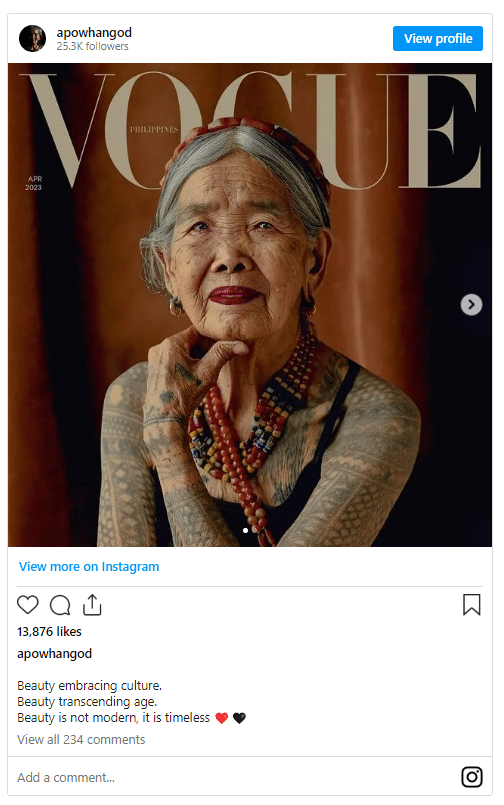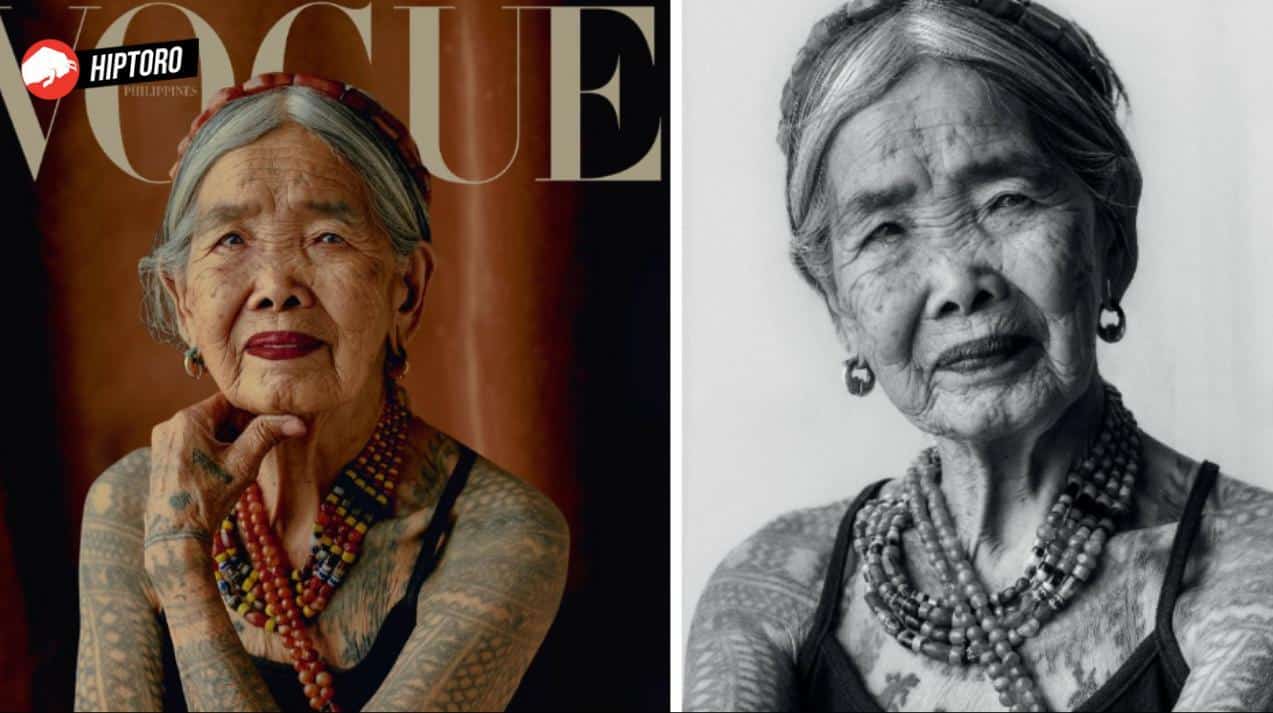A 106-year-old tattoo artist from the Philippines has made history by becoming Vogue’s oldest cover hero.
Apo Whang-Od is charged with preserving the ancient art of Batok, which entails tapping a tattoo into the flesh by hand with a thorn attached to bamboo that has been dipped in soot and natural dyes.
Whang-Od, a traditional tattoo artist who conducts the practice, is from a remote village in Northern Philippines’ Kalinga region.
“Heralded as the last mambabatok of her generation, she has imprinted the symbols of the Kalinga tribe – signifying strength, bravery and beauty – on the skin of thousands of people who have made the pilgrimage to Buscalan,” Vogue Philippines tweeted.
Apo Maria “Whang-Od” Oggay symbolizes the strength and beauty of the Filipino spirit.
Heralded as the last mambabatok of her generation, she has imprinted the symbols of the Kalinga tribe signifying strength, bravery & beauty on the skin.
Read more on https://t.co/2F1mJ5iQWG. pic.twitter.com/urVcA3g2Ek
— Vogue Philippines (@vogueph) March 30, 2023
According to Bea Valdes, the magazine’s CEO, putting Whang-Od on the cover was a no-brainer. “We felt she embodied our ideals of what is lovely about Filipino culture.” We think that the idea of beauty must evolve to include a diverse range of faces and forms. “What we hope to discuss is the beauty of humanity,” Valdes told The Guardian.
Men have historically worn Batok tattoos to represent bravery, and women to represent beauty. “[Batok] meant being minted as a headhunting warrior for men.” A bikking, or chest tattoo with designs that crawled up the shoulders and down the arms could take days to complete and cost the equivalent of a large pig or several kilos of rice. “Women were tattooed for a variety of reasons, the most common of which were fertility and beautification,” Vogue explained.
“The tattooed elder women of Kalinga often say that when they die, they can’t take their beads and gold with them to the afterlife. They only have the markings on their body,” the outlet continued.
Kalinga tattoo artist

According to custom, mambabatok can only pass on their craft through their bloodlines, and since Whang-Od has never had her own children, she has chosen to teach her grandniece Grace Palicas. When she started training, Grace was 10 years old and told Vogue that she was hesitant to learn from her aunt.
“I was the first of my siblings to learn how to tattoo.” I just watched what she did. “When I left for college in 2015, Elyang [Grace’s 23-year-old cousin tattoo artist] was the next person to learn so she could help Apo when so many tourists came,” Grace, now 26, explained.
Whang-Od told CNN in 2017: “[My friends who gave tattoos] have all passed away.” I’m the only one remaining alive who still has tattoos. But I’m not worried about the practice dying because [I’m training] the next generation of tattoo artists. As long as people come to get tattoos, the tradition will endure. I’ll keep tattooing as long as I can see clearly. “I’ll stop when my vision becomes blurry.”
Before Whang-Od, one of only two Indigenous people to grace the cover of Vogue, the oldest cover star for the global fashion magazine was Dame Judi Dench, who was 85 when she was featured on the front in 2020.









